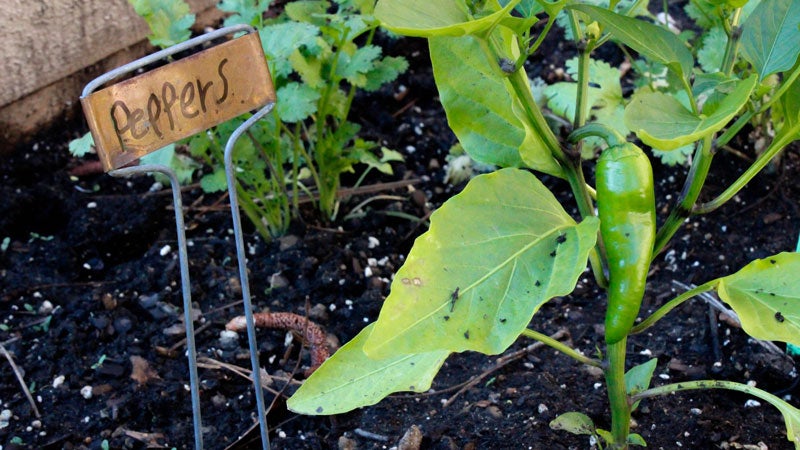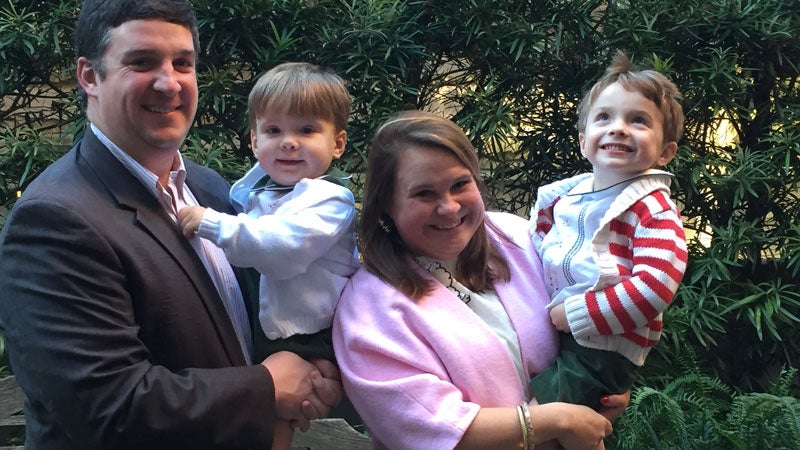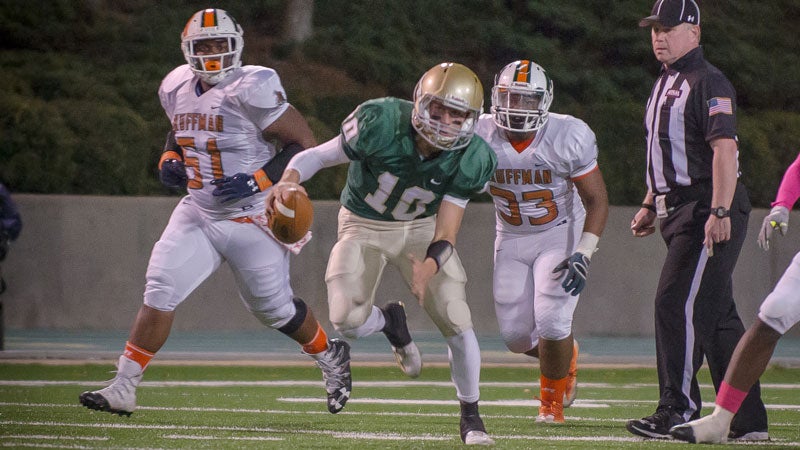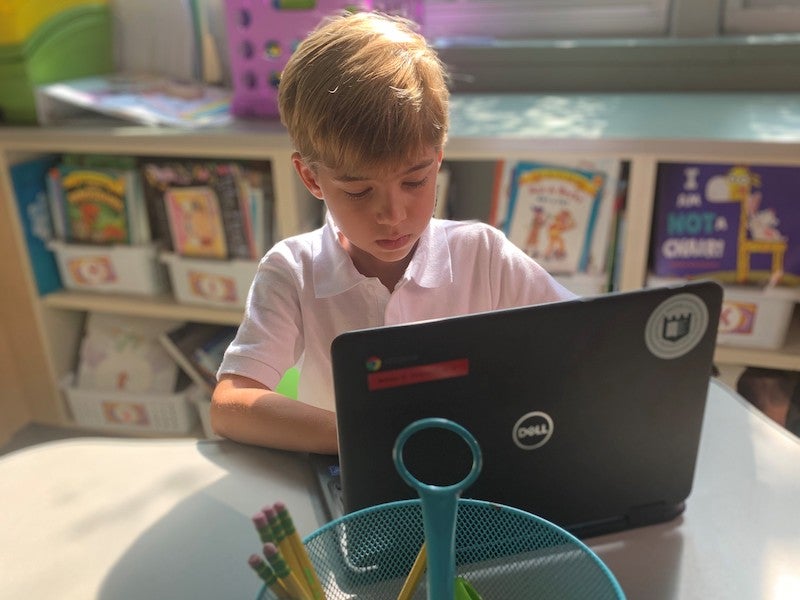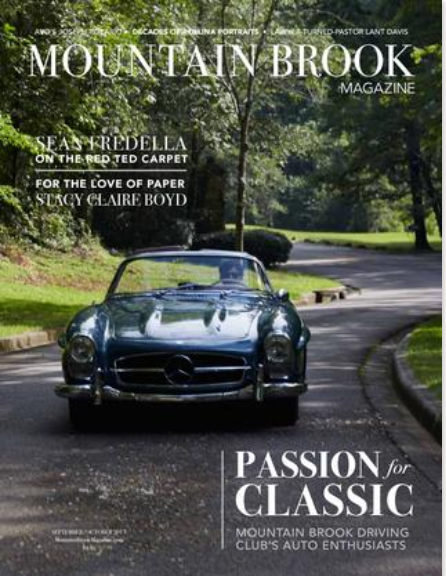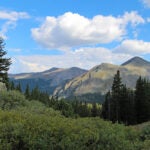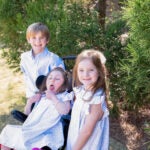Like many kindergarten classes, Heather Brown’s participated in a Thanksgiving feast last year. But in this instance her students were extra excited about…the salad. That’s right, the salad. Because, you see, they planted and harvested the lettuce for it themselves, right outside the window of their Cherokee Bend Elementary classroom. In fact, Brown finds that every time her class harvests broccoli and eats it, two or three students start liking it for the first time. “It’s cool for them to plant something and see it grow and then taste it,” Brown says.
As her students learn about habitats, life cycles and seasons, they see them all right there, just a few yards from their tables and books in the rectangular garden beds they tend. They plant flowers, pull onions from the ground, harvest chives and mint, and notice where new fruit is appearing. They see worms and spiders, bees and wasps, and look at them under magnifying glasses—and react accordingly. “A worm! A worm!” Brown hears regularly during their times in the garden. Often they even get to take the fruits of their labor home to share with their families.
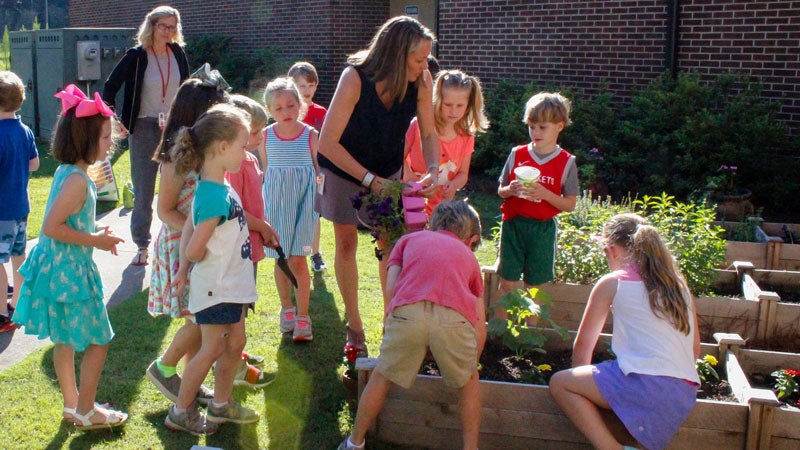 With a garden as an extension of their classroom, kids can create observational drawings of what they find and perform scientific studies without going far away. It’s a great testing ground ripe with academic and life lessons too. So when cabbage didn’t grow well in Brown’s garden, the students learned that things don’t always go as planned—and that light conditions affect how certain plants grow. While broccoli grows well in their garden, it doesn’t on the other side of the school where Brown planted it originally.
With a garden as an extension of their classroom, kids can create observational drawings of what they find and perform scientific studies without going far away. It’s a great testing ground ripe with academic and life lessons too. So when cabbage didn’t grow well in Brown’s garden, the students learned that things don’t always go as planned—and that light conditions affect how certain plants grow. While broccoli grows well in their garden, it doesn’t on the other side of the school where Brown planted it originally.
The garden got its start in Brown’s second-grade classroom a few years ago with the class of now rising sixth graders. There had been some flooding issues outside their classroom that left a muddy mess for the class when they walked to the playground, so a group of students came up with the idea to build a garden in the mud. Brown encouraged the students to develop a design for the space and enlisted the help of her dad, an avid gardener just like his dad, to build a few circular raised beds in the space.
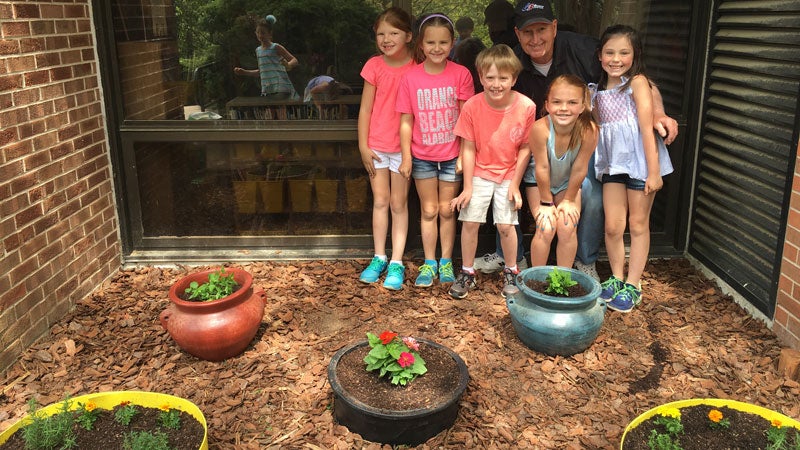 As the kids’ imaginations and interest in the garden grew, so did Heather’s as she started to dream up ways to incorporate hands-on learning in the garden into the curriculum. To take these to the next level, she applied for and received grant funding from the Magic City Reading Council for classroom materials tied to the garden: children’s fiction and nonfiction books on gardening, a new compost container and other supplies.
As the kids’ imaginations and interest in the garden grew, so did Heather’s as she started to dream up ways to incorporate hands-on learning in the garden into the curriculum. To take these to the next level, she applied for and received grant funding from the Magic City Reading Council for classroom materials tied to the garden: children’s fiction and nonfiction books on gardening, a new compost container and other supplies.
When Brown moved to teaching kindergarten this year, the garden evolved into a community effort too. Boy Scout Carey Hereford, a rising MBHS junior, built raised beds in a more spacious plot outside her new classroom. Parents contribute plants all year long. Briarwood Garden Club offered to help and has come to the school and potted plants and provided other materials too.
And one parent this year, KC Hairston, helped connect them with a community resource the kids certainly won’t forget. When a truck pulled up outside their classroom to dump dirt last fall, the kids were all standing by the window in awe. But it wasn’t just any dirt, they’d soon learn.
The dirt had come from a compost operation at Rathmell Field that decomposes leaves collected by Waste Management from all over Mountain Brook—including Brown’s students’ yards. “I call it super dirt,” says Johnny Harris, a Public Works supervisor over construction who has worked for the city of Mountain Brook for 28 years. “I took home (some) for (my) rose bushes and was clipping blooms every single evening. It’s unreal how potent this stuff is.” And that’s not all. The day the “super dirt” arrived at the school Harris and his colleagues talked to the kids about the composting process, complete with a video of the facility at work and hard hats for all the kids to wear.
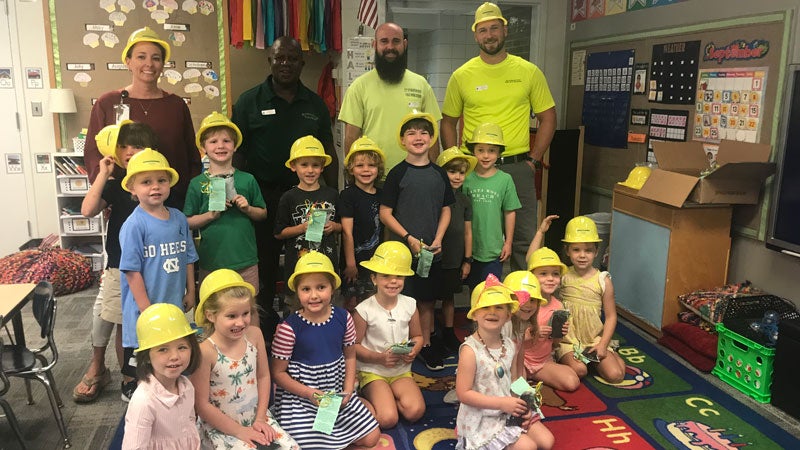 Brown’s students use compost bins in the classroom garden, but the city compost is on a whole different scale. In fact, one time the parks department put an uncooked ham wrapped in foil in the compost and it cooked all the way through because the compost is so hot. And now plans are in the works for the same in-school “field trip” to take place again next school year with all the kindergarten classes at the school.
Brown’s students use compost bins in the classroom garden, but the city compost is on a whole different scale. In fact, one time the parks department put an uncooked ham wrapped in foil in the compost and it cooked all the way through because the compost is so hot. And now plans are in the works for the same in-school “field trip” to take place again next school year with all the kindergarten classes at the school.
The garden real estate outside Brown’s room is only the beginning of this kind of hands-on learning initiative at Cherokee Bend. Brown is hoping to get more classrooms and community members involved in gardening and to maybe one day create an outdoor classroom down near the school’s playground.
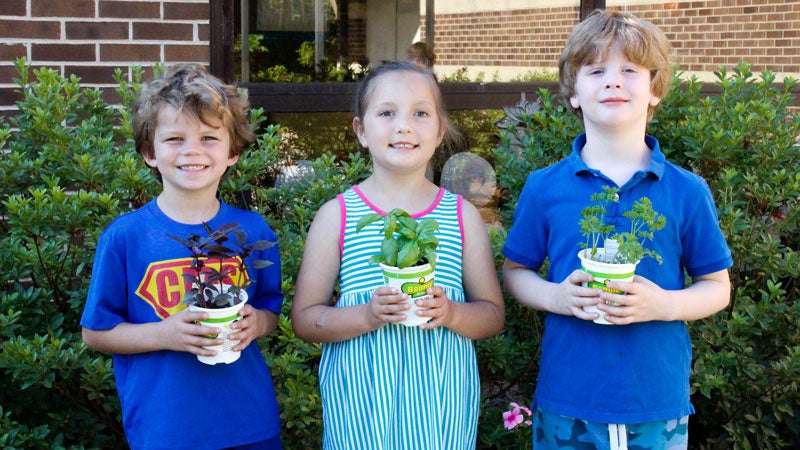 Several second-grade classes now have small gardens outside their windows, and as of the writing of this article, there was a giant head of cabbage ready for harvest outside teacher Emily Griner’s room—which was where Heather’s class first started a garden a few years back. In fact, Griner’s students told her that the garden was one of their favorite parts of the whole school year. Even when teachers don’t know anything about gardening, Brown encourages them to give it a try.
Several second-grade classes now have small gardens outside their windows, and as of the writing of this article, there was a giant head of cabbage ready for harvest outside teacher Emily Griner’s room—which was where Heather’s class first started a garden a few years back. In fact, Griner’s students told her that the garden was one of their favorite parts of the whole school year. Even when teachers don’t know anything about gardening, Brown encourages them to give it a try.
“I am excited about what gardening can provide our children,” Cherokee Bend Principal Sandy Ritchey says. “Young children can practice locomotor skills, body management skills and object control skills. Most importantly, being outdoors in the fresh air and moving around is a great way to get exercise, and our teachers incorporate literacy skills as well.”
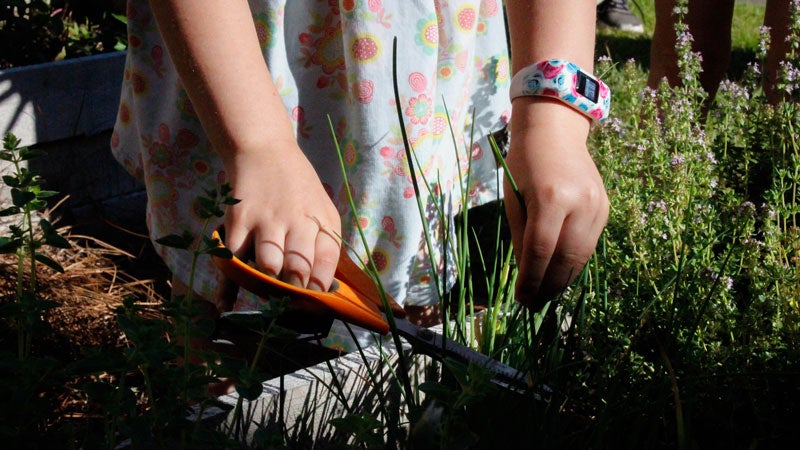 The dreams don’t stop with plants either. Brown has also envisioned having a school chicken coop and experimented with the first steps when her class housed an incubator for chicken eggs this school year. With inspiration and advice from Brookwood Forest teachers, Brown setup a camera and a live feed so other classrooms could tune in too as the six eggs hatched and chicks grew. Brown’s students named them Obi Wan, Chick Chick, Snooze and a few other names and cared for them until they needed a new home, which they found at school nurse Betsy Draper’s farm. Draper still takes photos of the chickens to update the kids on their progress.
The dreams don’t stop with plants either. Brown has also envisioned having a school chicken coop and experimented with the first steps when her class housed an incubator for chicken eggs this school year. With inspiration and advice from Brookwood Forest teachers, Brown setup a camera and a live feed so other classrooms could tune in too as the six eggs hatched and chicks grew. Brown’s students named them Obi Wan, Chick Chick, Snooze and a few other names and cared for them until they needed a new home, which they found at school nurse Betsy Draper’s farm. Draper still takes photos of the chickens to update the kids on their progress.
Be it broccoli or chickens, Brown is an advocate for getting outside the typical classroom box. “We can look at it in books, but if you can actually get out there and do it, there’s a whole other element of learning added,” she says. “Then (the students) have some background knowledge when we are looking at books, and they know the vocabulary of what they are reading.”

